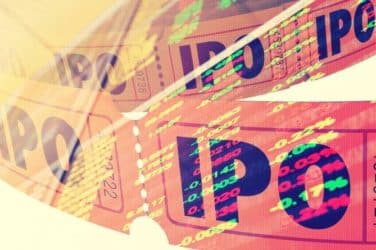Self-Shipping Aluminum: The Future of Commodity Markets (by Daniel James, IHS Markit)
09.19.2016In 1958 an economist named Leonard Read wrote a famous essay named “I, Pencil” that so potently described the power and complexity of the modern economy that is it still widely evoked today. In the essay he takes on the persona of a pencil to describe how even simple objects contain expertise and materials from around the globe.
My family tree begins with what in fact is a tree, a cedar of straight grain that grows in Northern California and Oregon. Now contemplate all the saws and trucks and rope and the countless other gear used in harvesting and carting the cedar logs to the railroad siding. Think of all the persons and the numberless skills that went into their fabrication: the mining of ore, the making of steel and its refinement into saws, axes, motors; the growing of hemp and bringing it through all the stages to heavy and strong rope; the logging camps with their beds and mess halls, the cookery and the raising of all the foods. Why, untold thousands of persons had a hand in every cup of coffee the loggers drink!
This essay demonstrates that even the smallest bit of the most every day item — the brass and nickel on the metal ferrule on the pencil — is the output from the global economy, and reminds us that access to simple everyday objects is contingent on an extremely complex system.
Critical to this system are the markets that facilitate trading in raw or processed commodities. According to the UN, more than 90% of global trade by weight travels by ship. To understand the size and importance of the commodities markets, you only have to realize that 80% of all marine cargo is commodities versus processed goods.
These markets are enabled by a number of trading firms that play increasingly important roles in helping smooth out the supply and demand of commodities globally. They also help end users navigate the international customs, global logistics, financing and law to move material from areas of abundance to areas of need. The role of commodities trading houses dates back to the origins of international commerce. Unfortunately so do many of the tools of the trade.
The bill of lading, essentially title to a ship’s manifest, dates back to Greek and Roman times. In the 16th century Spaniards began to formalize the concept into a more standardized document to enable faster and more efficient trade. Five hundred years later, these documents are essentially unchanged, down to the actual paper changing hands. The reliance on paper shows us how, for all its sophistication, there is much about global trade that needs to be modernized.
Indeed, we are experiencing an explosion of technologies that will radically alter the landscape of commodities. Just as the invention of computers and networks radically transformed the way firms viewed and used data in the 20th century, the converging trends of miniaturization, mobile, augmented reality and machine learning are radically altering the relationship that firms have with physical materials.
Over the next decade chips will be small enough and cheap enough to be embedded in essentially everything. Cellular coverage will become so ubiquitous that everything will be able to connect to the network. Technologies like augmented reality will mature from expensive toys to business critical tools. Machine learning will evolve from playing chess and identifying cats, to helping automate entire businesses.
It’s hard to predict exactly how these technologies will alter how commodities like oil and coal will be shipped and traded in the future but with a bit of imagination we see the potential for a radical new landscape.
– Driverless cars and drones will radically alter the economics of transportation, including last mile delivery
– Smart contracts, perhaps stored on a blockchain, will replace the use of documents such as warehouse receipts and bills of lading
– The expansion of cellular networks will enable real-time precision tracking, from origination to delivery
– Augmented reality will multiply the efficiency of human actors, from inspections to infrastructure maintenance
– The Internet of Things will enable infrastructure that is driven by networked sensors, driving the development of smart ports and smart pipelines
The physical markets are about to change more quickly than anyone could have predicted just a few years ago and the pace of innovation is accelerating. Today a small startup can build, with few resources, technology that not too long ago looked like science fiction. Moreover, firms trading commodities are operating in a zero tolerance environment for risk created by errors or bad data. This reality will lead commodities markets to fully digitize and adopt straight through processing frameworks long used in capital markets to achieve a real time view of risk and opportunity. Firms trading metals and other commodities need to sense this change and prepare for the inevitable shift from the paper-based processes of the past to the digital future.





